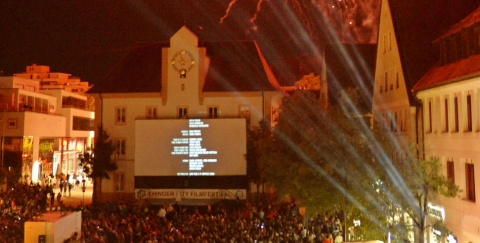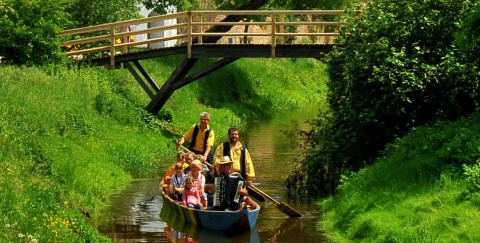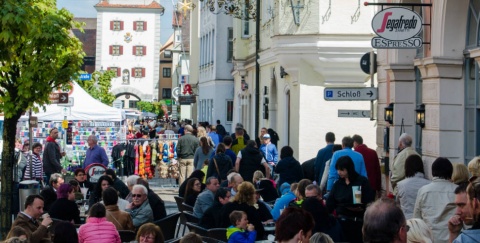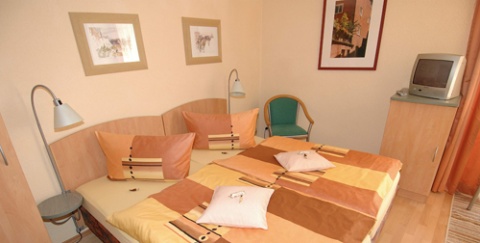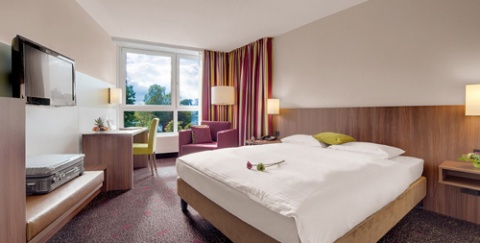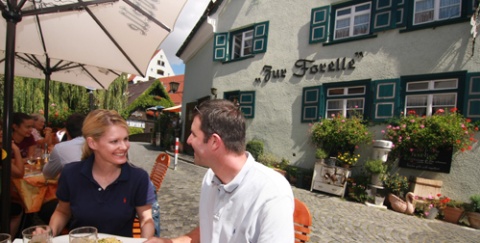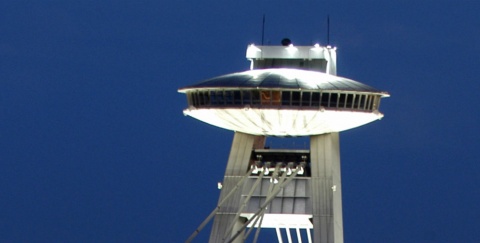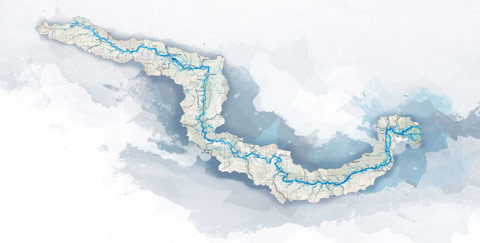
Rain
The town of Rain has long held special status. As a north-western border town of the former Duchy of Bavaria, it played a strategic role for which it was rewarded with town privileges and the right to hold a market and collect customs. And this destination on the Lech river is still a special place ...
Country: Germany
Situated in the Swabian district of Donau-Ries around 40km north of Augsburg, Rain has around 8,600 inhabitants and lies on the confluence of the Lech and Danube rivers.
City Highlights
Everyone who visits Rain falls for its charms. Or nearly everyone. On 14 and 15 April 1632, Johann Tserclaes Tilly, the famous imperial commander of the Thirty Years' War, suffered a major defeat here against Sweden's King Gustavus Adolphus, and a short while later died of his wounds in Ingolstadt. The large statue on the town square was erected in 1914 in honour of this great but tragic general. This is also the location for the town hall complex, an intriguing combination of old and new comprising a rococo building from the mid-18th century, a modern extension from the 1980s and the renovated Altherr Haus. It's a good starting point for a tour of the old quarter. Rain's many historical buildings include the distinctive water tower, the Karrer house, parts of the reconstructed town walls, and the area known as Oberes Eck with its local history museum, the Schwabtor town gate, the Spitalstadel, the All Saints Chapel and the house where the Lachner brothers were born. Don't miss the late-Gothic ducal palace from the 15th century with its beautifully laid out gardens, or the St. John the Baptist parish church, whose 66-metre tower can be seen from miles around thanks to the flatness of the landscape. For an alternative view of Rain, and to see what it looked like in 1698, visit the model in the town hall.
Exhibits in the local history museum cover fashion, housekeeping and clothes washing, the guilds and skilled trades of hat makers and chimney sweeps, the local history of the salt trade and the Battle of Rain, artefacts made by nuns and monks, and religious art. Every year there are two one-off exhibitions as well. The house where the musical Lachner brothers were born has been well preserved and is open to the public as a museum. Franz Lachner, the most famous of the three brothers, was the Bavarian royal kapellmeister at Munich for over three decades, while Ignaz and Vinzenz were also standard bearers for the conservative, classical tradition within romantic composition. Another of the town's museums is the Jean Daprai Museum in the Raiffeisenbank building. Daprai was born in 1929 in the Italian town of Rovereto but lived in Rain with his parents between 1941 and 1945. Since 1955 he has lived and worked in Paris, but here in the town where he once lived, the Raiffeisenbank has created a showcase for his magical-realist paintings.
Keen gardeners and die-hard romantics will love Dehner Flower Park and its educational garden. Around 1.5 million people visit the park every year to enjoy, and relax in, its spacious and expansive grounds, which comprise the Flower Park itself plus the educational garden and various exhibits and features.
Accommodation in Rain
Two hotels and a wide range of inns and guesthouses are available for overnight accommodation and longer stays. Top of the list is undoubtedly the four-star Dehner Blumenhotel with its extensive spa. For a more rustic atmosphere, the old Boarn inn (boarn is an old Bavarian word for guesthouse) stands on the site of an inn dating back to 1695, which also had a brewery attached. Anyone wanting to try some hearty Bavarian fare should make a beeline for the Boarn.
There is a motorhome campsite by the Lech river about a ten minute walk from the centre of town and five minutes from Dehner Flower Park. The site, opened in 2009, has eight pitches as well as power, water and sewage hook-ups.
Activities in Rain
Romantic Road - Germany's most famous and popular tourist route.
Since 1950, the golden trio of nature, culture and warm hospitality has been the hallmark of this road that leads from the river Main to the Alps. Its name alludes to the romance of the medieval towns and fairytale Neuschwanstein Castle, attractions which captivate visitors from all over the world and turn back the clock to times long past. From Würzburg to Füssen, the road reveals the many treasures of western art, history and culture.
The Donau-Ries holiday region is characterised by unique landscapes. The glacial valleys of the Danube and Lech rivers shape the plains, while the Swabian and Franconian Alb hills are typically idyllic karst landscapes. The highlight of the area is undoubtedly the Ries depression, the most intact and thoroughly explored meteorite crater in the world. Germany's most popular tourist routes – the Romantic Road, the Alpine-Baltic route, the Swabian Alb Route and the German Danube Route – all meet in the Donau-Ries region. Then there's the Bavarian-Swabian St. James' Pilgrimage Way, which runs through the region for 62km, or four days' walking.
Various hiking routes around Rain make for interesting excursions. The Tilly Route, for example, which traces the Battle of Rain, can be walked in around four and a half hours or cycled in about one hour. Another option is the Lechweg, a walking trail which runs for around 19km from the confluence of the Lech and Danube rivers, skirting Rain along its way.
The Lech-Danube Cycle Route leads from the Ochsentörl in Rain to where the Lech meets the Danube.
Contact:
Stadt Rain (town council)
Hauptstrasse 60
86641 Rain
Tel.: +49 (0)9090 7030
Fax: +49 (0)9090 703 139
DANUBE.TRAVEL has no control over the website content generated by users and/or visitors, neither such content represents a statement, opinion, recommendation or rating by DANUBE.TRAVEL. For further information please refer to DANUBE.TRAVEL – General Website Terms and Conditions of Use.
 EN
EN DE
DE
